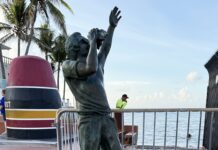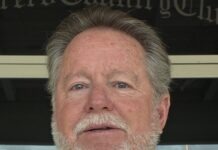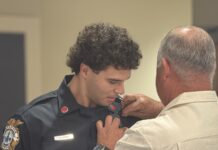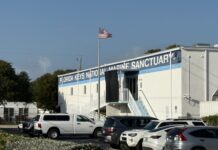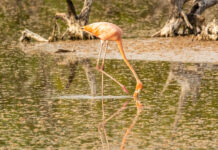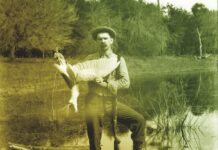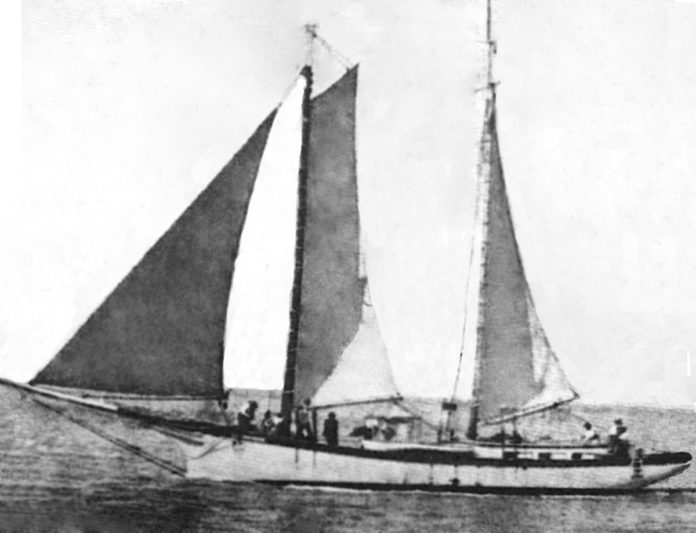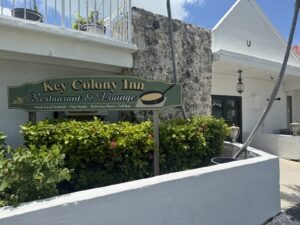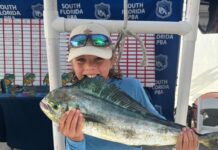There is a reason the history of a place like the Florida Keys can be written so many different ways. Some writers rehash the local legend and lore. Some writers delve a little deeper into the historical record. The resulting stories can tell wildly different accounts.
The origin of the place name Islamorada is a wonderful example. According to the man who created the original Islamorada townsite, William J. Krome, the name means Island Home.
Krome would be the ultimate authority as he was the one who chose the name circa 1907. Still, people claim Islamorada means the Purple Isles, because of some Spanish conquistador’s admiration for the purple water, purple snails, or the purple leaves of the bougainvillea. It is pure myth.
But, it is a great story to tell and a hard one for people to relinquish. The fact that there are zero documents backing the story is meaningless to those purple hardliners. At least the Chamber of Commerce changed their Purple Isles pitch and embraced the real story of the origin of the Islamorada name. Unfortunately, the Purple Isles story is endlessly repeated by travel writers, bloggers and even the Florida Keys’ own Tinsley Advertising, the group responsible for making those commercials designed to tempt visitors in our direction. That they continue to promote Islamorada as the Purple Isles is frustrating for a local historian, especially since they have been told the real origin story on more than one occasion.
Over the last 15 years, I have read a thing or two about the local history and have learned more about this island chain, the people who settled here, and the industries they ignited than the average resident. For whatever reason, it never gets boring. It also provides endless fuel for my stories about the Florida Keys. For the last eight years, I’ve been able to focus all of that effort on Islamorada’s Keys History & Discovery Center. Creating a museum from scratch has been a thrill, and I’m proud of every story, artifact and exhibit displayed at the facility. It has, in fact, been a freaking thrill, and executive director Jill Miranda Baker has been the perfect partner in crime.
For someone who moved to the Keys 20 years ago to work on a novel, the transition to local historian was an unexpected turn of events. It is also one of the best things to have ever happened. There are a ton of stories still to tell as well as a doozy about that mythical pirate named Black Caesar, whose legend continues to unfold.
The latest discovery is the fifth version of a man identified as Black Caesar. This makes four hulking brutes named Black Caesar associated with Elliott Key, the northernmost of the Florida Keys: three pirates, and a fourth identified as the strongest worker on a pineapple farm. The other Black Caesar also had a piratical history of sorts, but it was off in the Southern Hemisphere and is connected to Australia.
The latest revelation comes from a story written by staff writer Bruce L. Henry at the Miami Daily News. According to his story, dated April 5, 1936, the pirate washed ashore at Elliott Key after escaping from a ship wrecked by a hurricane. While his story has a familiar ring to it, it also has the pirate named Black Caesar arriving in the late 1500s. The account predates the story of Black Caesar, the African chieftain who became a trusted lieutenant of Captain Edward Teach, Blackbeard himself, by 100 years.
One of the things that is of particular interest about this slice of local lore is not just that the pirate history of Elliott Key starts circa 1585 and wraps up at some point in the early 1800s; each version of the pirate essentially tells the same story. Unraveling the legend of Black Caesar continues to be a personal favorite, and it would not surprise me a bit if there were a book in the works that breaks down all of the myths, legends and lore of the greatest Florida Keys pirate who never existed.
Because I will no longer be serving as the curator at the Keys History & Discovery Center, I will have a great deal more time to spend working on a handful of book projects that will likely include The Black Caesar Files. While I will still be affiliated with the museum, serving as the historian and helping promote the local history, I’m pretty easy to find if anyone is looking for a writer and historian with a curatorial background.

